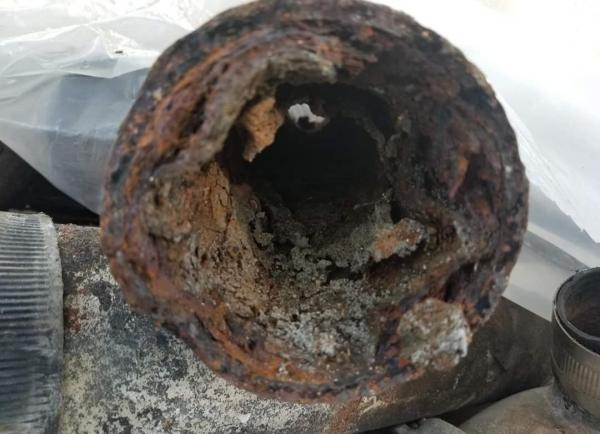
-- National Building Expert Dr. Lance Luke www.lanceluke.com has provided facts surrounding the recent high number of calls to plumbers due to clogged pipes.
The following are excerpts taken from his recent presentation.
The current COVID-19 pandemic has contributed to a buying panic for paper goods that have caused toilet paper to be out of supply due to hoarding.
The shortage of toilet paper has caused people to use substitute products such as napkins, paper towels, and wipes, which are not a substitute for toilet paper from a plumbing pipe perspective.
Let’s discuss briefly the anatomy of a toilet drain pipe. When a toilet is flushed, the water and debris flow down a drain pipe that is generally about four inches in diameter. The type of drain pipe material commonly used in older homes and buildings is cast iron. There are other types of drain pipe material in use, such as clay, ABS, and PVC, but in this discussion, we are talking about cast iron piping. Cast iron corrodes from the insides of the pipe and corrosion may lead to cracks, bumps, ridges where debris flushed down the toilet can get caught. Imagine taking a four-inch piece of pipe and stuffing down crumbled pieces of paper towels. You will soon see that the pipe is going to get filled up in a very short order.
Cast iron pipes historically last on an average between 35-40 years. Over many years use, sludge and debris build up on and stick to the insides of the pipe. This buildup causes the original 4-inch clear diameter of the pipe to slowly over time turn into a 2-inch rough diameter pipe. The 2 -inch loss in diameter is due to blockage from the debris clinging to the insides of the pipe. Over time the pipe diameter gets smaller and smaller, resulting in slow draining and eventually a back-up condition. Also, the toilets today are low flow type that requires less water as compared to the older toilets. So now you have a situation where there is less water used for flushing down drain pipe debris.
The reason why only toilet paper should be flushed down toilets is due to biodegradable factors.
Toilet paper biodegrades fast. Other products not so fast and thus remain stuck in the drainpipe, causing back-ups. The stronger the material, the longer the material stays in the plumbing system. Napkins and paper towels are much stronger than toilet paper, thus take longer to break down. Wipes are the worse culprit, and it is almost like flushing a cloth baby diaper down the toilet.
Why are wipes bad for the drain pipes of your home or building? The answer lies in the various components or substrates that the product is made from. Substrates are materials used to manufacture wipes. They are not secret ingredients. Specific materials used to manufacture wipes include cotton, viscose, plastic resins such as polyester (plastic fibers), polypropylene, and polyethylene, rayon fibers, and wood pulp. The materials used in baby wipes is a non-woven fabric similar to the type used to make disposable diapers and dryer sheets.
Items to not flush down the toilet include:
1. Facial tissues, paper tissues (commonly known as Kleenex which is a brand name)
2. Napkins
3. Paper towels, handy type wipes
4. Wipes (commonly called wipes, wet wipes, clean wipes, disinfecting wipes, feminine wipes, hand sanitizing wipes, personal wipes, cleaning wipes. moist towelettes, etc.)
5. Disposable wipes
6. Disposable diapers
7. Feminine products
8. Dryer sheets
9. Dental floss/tape
The term disposable or flushable wipes are misleading. Do not flush down the toilet. They may eventually biodegrade, but your drain piping system may not wait that long and may clog up sooner.
The US Composting Council has stated that a leading paper towel product biodegrades in 60 days or less. Your plumbing drain system is not going to wait 60 days or less, and there is a chance that you will experience a back-up before that time.
Multi-story condominium and apartment buildings are especially at risk of drainpipe flooding due to the number of floors in the building. The situation is bad as raw sewage would end up flooding adjacent units and traveling multiple floors down the building. Not only will you have biohazard waste, but there will be secondary health and safety issues due to mold growth as a result of the flooding.
A survey of ten plumbing contractors has resulted in all of them urging the general public not to flush anything down the toilet except toilet paper. Keep in mind that toilets are not trash cans. Do not flush down the wrong materials.
Please remember my simple message today. Save That Pipe, Don’t Flush That Wipe.
Sources: Environmental Protection Agency, Kimberly-Clarke Corp, Association of Nonwoven Fabrics, Industry, US Composting Council.
Dr. Lance Luke is a Two Time Best-Selling Author and a National Building Expert.
His National Blog contains articles about construction and building safety issues, including articles on COVID-19.
Release ID: 88952990

